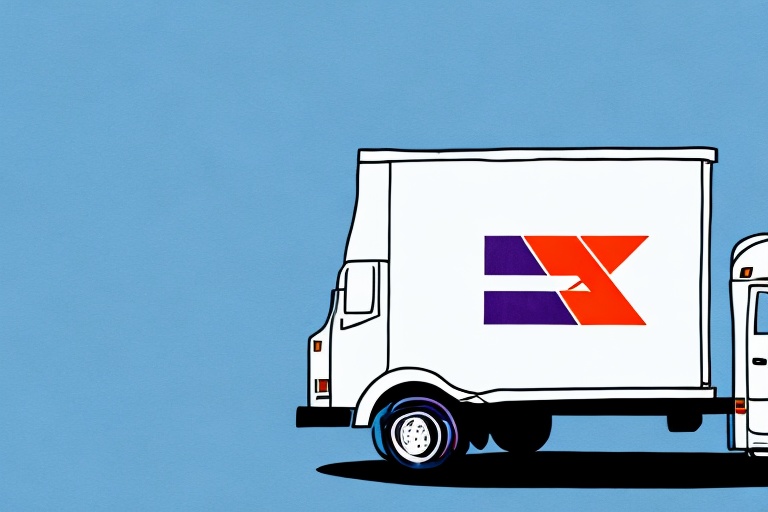Why Choose FedEx for Shipping Frozen Food?
When it comes to shipping frozen food, reliability and efficiency are paramount. FedEx stands out as a preferred carrier due to its extensive transportation network, ensuring that your frozen goods reach their destination promptly and safely.
Extensive Transportation Network
FedEx operates a vast network that covers both domestic and international destinations. Whether you're shipping locally or across continents, FedEx offers multiple service options tailored to your specific needs, providing flexibility and coverage that few carriers can match.
Specialized Packaging Solutions
FedEx offers specialized packaging for frozen items, including insulated containers and the use of dry ice or gel packs. These solutions help maintain the required temperatures, ensuring that your frozen food remains fresh throughout transit.
Reliable Tracking and Delivery Guarantees
With FedEx's advanced tracking systems, you can monitor your shipment in real-time. Additionally, their delivery guarantees provide peace of mind, ensuring that your frozen food arrives on time or you receive compensation.
Factors Affecting the Cost of Shipping Frozen Food with FedEx
The cost of shipping frozen food with FedEx can vary based on several key factors. Understanding these can help you optimize your shipping strategy and manage expenses effectively.
Package Weight and Dimensions
Heavier and larger packages incur higher shipping costs. Accurately measuring and weighing your shipments can help you avoid unexpected expenses.
Shipping Distance and Destination
The distance between the origin and destination plays a significant role in determining shipping costs. Longer distances typically result in higher fees, especially for expedited services.
Type of Shipping Service
FedEx offers various shipping services, including Ground, Express, and Freight. Each service comes with different pricing structures based on delivery speed and handling requirements.
Seasonal Demand
During peak seasons, such as holidays, shipping rates may increase due to higher demand. Planning ahead can help mitigate these costs.
Best Practices for Packaging Frozen Food
Proper packaging is crucial to ensure that frozen food remains intact and safe during shipping. Here are essential tips to package your items effectively:
Use Insulated Packaging Materials
Insulated boxes or foam containers are recommended to provide thermal protection. These materials help maintain the cold temperature required for frozen goods.
Incorporate Dry Ice or Gel Packs
Using sufficient dry ice or gel packs is vital to keep your food frozen. Ensure that these cooling agents are evenly distributed around the product to maintain consistent temperatures.
Proper Labeling
Clearly label your package as "Perishable" and "Keep Frozen." This alerts carriers to handle the shipment with the necessary care and urgency.
Tips to Ensure Frozen Food Stays Frozen During Shipping
Maintaining the frozen state of your goods throughout transit is essential. Follow these tips to ensure optimal temperature control:
- Use Adequate Cooling Agents: Ensure you have enough dry ice or gel packs based on the shipment size and transit duration.
- Avoid Overpacking: Overpacking can reduce the effectiveness of cooling agents. Allow space for air circulation within the insulated packaging.
- Optimal Shipment Timing: Ship early in the week to prevent delays over weekends and choose the fastest shipping option available.
- Choose the Right Carrier: Select a carrier experienced in handling frozen shipments to ensure proper handling and transportation.
FedEx Shipping Options: Ground, Express, and Freight
FedEx provides a range of shipping options tailored to different needs and timelines:
- Ground: Ideal for non-urgent shipments, FedEx Ground offers delivery within 1-5 business days, depending on the distance.
- Express: For faster delivery, FedEx Express provides overnight to two-day shipping options, ensuring quick transit of your frozen goods.
- Freight: Suitable for larger shipments, FedEx Freight handles bulk orders with specialized equipment and temperature-controlled transportation.
Calculating and Comparing Shipping Costs
Estimating the cost of shipping frozen food with FedEx involves several considerations. Here's how to approach it:
Utilize the FedEx Rate Calculator
FedEx offers an online tool called 'Get Rates and Transit Times,' which allows you to input shipment details such as weight, dimensions, origin, and destination to receive an estimated cost.
Compare with Other Carriers
To ensure you're getting the best rate, compare FedEx's pricing with other carriers like UPS or DHL. Consider factors such as delivery speed, reliability, and additional services when making your decision.
Factor in Additional Costs
Remember to account for costs related to specialized packaging, dry ice, or additional insurance. These can significantly impact the total shipping expense.
Understanding FedEx's Delivery Guarantees and Tracking
FedEx provides robust delivery guarantees and tracking options to enhance the shipping experience:
Delivery Guarantees
Depending on the service chosen, FedEx offers money-back guarantees if shipments are delayed. This ensures accountability and reliability in their delivery commitments.
Advanced Tracking Tools
FedEx's tracking systems allow you to monitor your shipment's progress in real-time. Options include online tracking via their website, mobile app notifications, and email updates.
Common Mistakes to Avoid When Shipping Frozen Food with FedEx
Avoid these common pitfalls to ensure your frozen shipments arrive safely and on time:
- Insufficient Insulation or Cooling Agents: Ensure you use enough insulation and cooling agents to maintain the required temperature.
- Overpacking: Avoid overpacking your shipments, which can hinder the effectiveness of cooling materials.
- Incorrect Labeling: Properly label your packages to alert carriers of the perishable nature of the contents.
- Choosing Inappropriate Shipping Services: Select a shipping service that aligns with your delivery timeline and handling requirements.
Customer Feedback on Using FedEx for Shipping Frozen Food
Customers generally express positive experiences with FedEx for shipping frozen food, highlighting the carrier's reliability and efficient delivery services. However, some have noted occasional delays or issues related to packaging. Selecting the right service and adhering to best packaging practices can mitigate these concerns.
Conclusion: Is Shipping with FedEx Worth the Cost?
Shipping frozen food with FedEx offers a blend of reliability, extensive network coverage, and specialized services that make it a worthwhile investment for both businesses and individuals. By understanding the cost factors, adhering to best packaging practices, and utilizing FedEx's tracking and guarantee features, you can ensure that your frozen goods reach their destination safely and efficiently. While costs may vary based on specific needs, the benefits of using FedEx often outweigh the expenses, making it a viable option for your frozen shipping requirements.






















